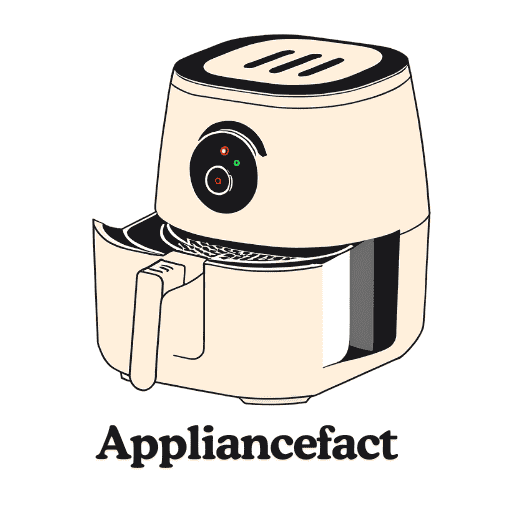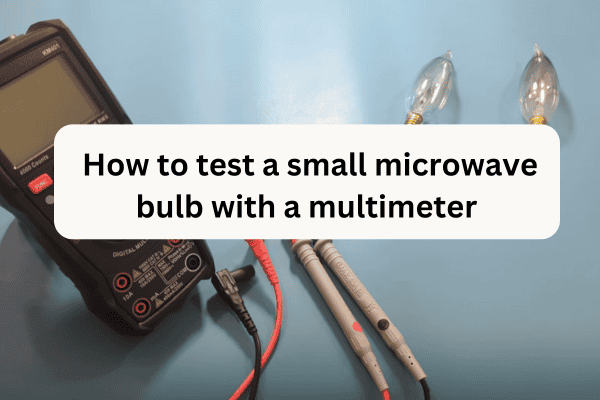I stood by my microwave, unable to see my soup because the bulb was dead. That taught me how to test a small microwave bulb with a multimeter and return the light. I’ve tinkered with home appliances for years, yet this quick repair still amazed me. Join me as I show you the simple steps, share a few funny mishaps, and help you save time and money!
Contents
Understanding the Small Microwave Bulb
Think of the small microwave bulb as a tiny flashlight that helps you see your food. It lights up the interior so you can watch your meal cook. Without it, you’re stuck guessing if your soup is boiling over. This small part carries a big load.
I once tried to reheat sauce late at night, but my bulb had died. The sauce bubbled over, and I didn’t know until the smell hit me. That taught me how important it is to fix these things fast. The bulb can fail from a burned-out filament or a loose socket, so it pays to keep an eye on it.
Microwave light testing is a simple form of kitchen troubleshooting. You can run a continuity test to check if the bulb is still good. To learn how to test a small microwave bulb with a multimeter, follow these easy steps. It saves both time and money.
Safety Measures
Unplug the microwave first. Trust me, you do not want to feel that jolt. I once saw sparks fly when a friend forgot to pull the plug. He was doing simple microwave light testing and got a scary surprise.
Next, be sure to check the capacitor if you remove the cover. This part can hold a charge even when the power is off. Think of it like a hidden reservoir of energy just waiting to zap you. Discharging is key to safe kitchen troubleshooting and avoiding unwanted shocks.
Finally, wear gloves and use insulated tools. A simple slip can turn a friendly continuity test into a bad memory. These safety measures are the backbone of testing a small microwave bulb with a multimeter without harm. They keep your hands safe so you can complete your microwave repair with peace of mind.
Tools and Preparation
- Required Tools:
- Multimeter
- Screwdriver set
- Flashlight (optional but helpful)
You will need a few essential tools to get started. A multimeter is key to how to test a small microwave bulb with a multimeter. A set of screwdrivers will help remove panels or unscrew the light cover. A flashlight can save the day if your kitchen is dim. It’s simple gear, but it makes a big difference.
Next, set the multimeter to the correct mode. You can choose the continuity or the Ohms setting. If you opt for continuity, you will hear a beep when the circuit is complete. The Ohms setting shows a numeric value, which works too.
Finally, prepare your workspace. Make sure it’s clean and bright. Keep small containers for the screws or tiny parts so they don’t vanish under the fridge. A little order can save a lot of stress.
Step-by-Step Guide: How to Test a Small Microwave Bulb with a Multimeter
- Power Off and Unplug
Make sure the microwave has no power. Pull the plug out from the outlet. This prevents shocks and protects both you and the appliance.
- Access the Bulb
Remove any cover or panel that hides the bulb. I once lost a screw under the microwave. Now, I use a small magnet to grab those tiny metal pieces when they roll away.
- Remove the Bulb
Twist it out gently or pull it free from the socket. Check for dark spots, broken wires, or burnt filaments. If you see damage, it may need replacing, but let’s confirm with a quick test.
- Set Multimeter to Ohms/Continuity
Switch your multimeter dial to the Ohms or continuity mode. Plug the black lead into the COM port and the red lead into the VΩ port. This setup helps with accurate kitchen troubleshooting.
- Test for Continuity
Touch one multimeter probe to the bulb’s base contact and the other probe to its side. If you use continuity mode, the multimeter will beep if the bulb forms a complete circuit. If the filament is still intact, you’ll see a low number in the Ohms setting.
- Interpret the Reading
A beep or a low resistance means the bulb is good. A high or infinite reading means it’s likely burned out. This is the essence of how to test a small microwave bulb with a multimeter without hassle.
- Reinstall or Replace
If the bulb tests well, fit it back into the socket and secure any panel you removed. If it’s bad, choose the same type and size for a replacement. That way, your microwave will light up again, saving you from sneaky spills in the dark.
Extra Checks: Testing the Socket
Sometimes, the bulb itself is fine. The socket might be the culprit. That’s why testing the socket matters in kitchen troubleshooting. You don’t want to replace a good bulb and still sit in the dark.
Switch your multimeter to AC volts for this microwave light testing step. Plug the microwave back in, but keep your hands clear. Live voltage can be risky, so proceed with caution. I once flinched when I saw a tiny spark, reminding me that safety is key.
Touch the probes to the socket’s wires and check the multimeter display. Many microwave bulbs run on about 30–40 volts, so a reading in that range is expected. The problem might be more profound if you see no voltage, like a bad control board. This last check helps confirm if you need a simple fix or a more significant repair.
Common Mistakes and Troubleshooting
Using the wrong bulb is more common than you might think. Always match the wattage and size your microwave requires. A friend once bought a cheaper bulb, only to melt part of the plastic lens inside the microwave. Double-checking specs can save you from that mess.
Never forget to unplug the microwave before any kitchen troubleshooting. I once got a tiny shock, which scared me more than I like to admit. Also, keep an eye on your multimeter’s dial and leads. A small misread can make you think the bulb is broken when it’s not.
Finally, watch out for the capacitor. This component stores a charge even when the microwave is unplugged. Discharge it or risk a dangerous zap. A little caution goes a long way when you learn how to test a small microwave bulb with a multimeter without worrying about an accidental spark.
Final Thoughts
Unplug the microwave before you do anything. Set your multimeter to continuity or Ohms. Check if the bulb is good, then replace it if needed. That’s the heart of how to test a small microwave bulb with a multimeter.
Remember safety first. Always discharge the capacitor to avoid electric shocks. I once skipped that step and felt a slight jolt. It was enough to remind me never to forget again.
Feel free to share your tips below. Every kitchen hack can help someone else. If any step feels tricky, call a professional. It’s always better to be safe than sorry.

